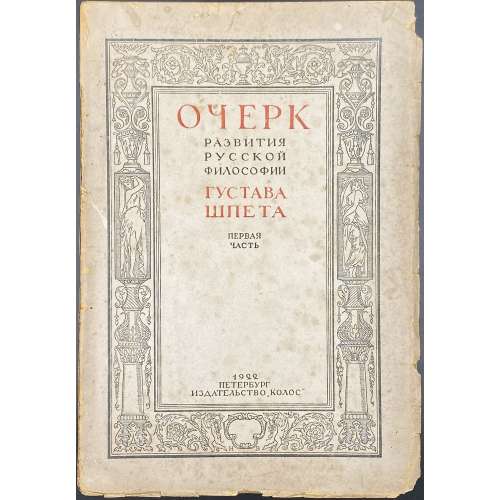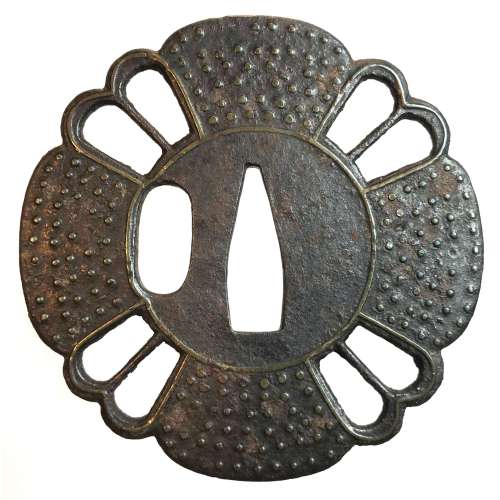-
![Манцони Алессандро. Обрученные. Повесть из истории Милана XVII века. Пер.и комм. И.И.Штица. Вст.ст А.К.Дживелегова. Илл. Е.Д.Белухи // Серия: Итальянская лит-ра. — М.-Л.: Academia, 1936. — XXXVIII, 952 стр., 15 илл. Тираж: 5300 экз. [том выходил без супера].](https://varshavskycollection.com/wp-content/uploads/2021/02/LIB-1333-a-scaled-500x500.jpg) Title page: АЛЕССАНДРО МАНЦОНИ | ОБРУЧЕННЫЕ | ПОВЕСТЬ ИЗ ИСТОРИИ | МИЛАНА XVII ВЕКА | ПЕРЕВОД И КОММЕНТАРИИ | И. И. ШИТЦА | ВСТУПИТЕЛЬНАЯ СТАТЬЯ | А. К ДЖИВЕЛЕГОВА | ACADEMIA | 1936 || Frontispiece: ИТАЛЬЯНСКАЯ ЛИТЕРАТУРА | ПОД ОБЩЕЙ РЕДАКЦИЕЙ А. К ДЖИВЕЛЕГОВА | АЛЕССАНДРО | МАНЦОНИ | 1785 — 1873 | ACADEMIA | МОСКВА ЛЕНИНГРАД || Title verso: ALESSANDRO MANZONI | I PROMESSI SPOSI | Иллюстрации — автолитография | Е. Д. Белухи | Титула и переплет | по его же рисунку || Pagination: [i-vii] viii-xxxviii [2] [2] 3-946 [8] + 15 leaves of illustrations. Collation: [I]8 II8 III4 1-598 ⅛605 + 5 leaves of plates + 10 leaves of plates (lithography by Е. Д. Белуха). Binding: 19.5 x 14.5 cm; Publisher’s blue cloth, lettering and design to cover and spine (by Е. Д. Белуха). Print run: 5300 copies. Catalogue raisonné: Крылов-Кичатова (2004): №832, p. 279. Contributors: Мандзони, Алессандро [Manzoni, Alessandro] (Italian, 1785 – 1873) – author of the original text. Шитц, Иван Иванович (Russian, 1874—1942) – translator from the Italian into Russian. Дживелегов, Алексей Карпович (Russian, 1875 – 1952) – editor. Белуха, Евгений Дмитриевич (Russian, 1889 – 1943) – artist. For the first English edition see: [LIB-1332.2017]: Alessandro Manzoni. The betrothed / (Standard novels). — London: R. Bentley, 1834.
Title page: АЛЕССАНДРО МАНЦОНИ | ОБРУЧЕННЫЕ | ПОВЕСТЬ ИЗ ИСТОРИИ | МИЛАНА XVII ВЕКА | ПЕРЕВОД И КОММЕНТАРИИ | И. И. ШИТЦА | ВСТУПИТЕЛЬНАЯ СТАТЬЯ | А. К ДЖИВЕЛЕГОВА | ACADEMIA | 1936 || Frontispiece: ИТАЛЬЯНСКАЯ ЛИТЕРАТУРА | ПОД ОБЩЕЙ РЕДАКЦИЕЙ А. К ДЖИВЕЛЕГОВА | АЛЕССАНДРО | МАНЦОНИ | 1785 — 1873 | ACADEMIA | МОСКВА ЛЕНИНГРАД || Title verso: ALESSANDRO MANZONI | I PROMESSI SPOSI | Иллюстрации — автолитография | Е. Д. Белухи | Титула и переплет | по его же рисунку || Pagination: [i-vii] viii-xxxviii [2] [2] 3-946 [8] + 15 leaves of illustrations. Collation: [I]8 II8 III4 1-598 ⅛605 + 5 leaves of plates + 10 leaves of plates (lithography by Е. Д. Белуха). Binding: 19.5 x 14.5 cm; Publisher’s blue cloth, lettering and design to cover and spine (by Е. Д. Белуха). Print run: 5300 copies. Catalogue raisonné: Крылов-Кичатова (2004): №832, p. 279. Contributors: Мандзони, Алессандро [Manzoni, Alessandro] (Italian, 1785 – 1873) – author of the original text. Шитц, Иван Иванович (Russian, 1874—1942) – translator from the Italian into Russian. Дживелегов, Алексей Карпович (Russian, 1875 – 1952) – editor. Белуха, Евгений Дмитриевич (Russian, 1889 – 1943) – artist. For the first English edition see: [LIB-1332.2017]: Alessandro Manzoni. The betrothed / (Standard novels). — London: R. Bentley, 1834. -
 Iron tsuba of 8-lobed form pierced with six openings (sukashi) and decorated with design of bamboo and arabesque in flat brass inlay (hira-zōgan). Two of the openings serve as hitsu-ana. The design on the face represents bamboo trunks and leaves, clouds, waves, and vines; on the back - vines and leaves, that forms an arabesque (karakusa) motif. Rounded square rim. 'Silver' patina. Hitsu-ana with copper sekigane. Heianjō (most probable) or Kaga-Yoshirō school. Late Muromachi or Momoyama period; 16th century. Size: Height: 74.6 mm; Width: 69.5 mm; Thickness at seppa-dai: 4.2 mm. Weight: 113.9 g. Provenance: Gary D. Murtha. This tsuba is illustrated at: Japanese sword guards. Onin - Heianjo - Yoshiro by Gary D. Murtha [GDM Publications, 2016, p. 48]: "Iron, 80x75x3 mm tsuba with brass karakusa vines and leaves on one side with bamboo, leaves, and clouds on the reverse. This tsuba is one of those pieces that might be classified as Onin or Heianjo work, but the flush inlay tips it to the Heianjo side. Late Muromachi period." I would like to add that it easily may also be classified as Kaga-Yoshirō. Robert Haynes in Study Collection.., page 32, illustrates a look-a-like example, and writes: "This style of inlay, where the designs on the face and the back are very different, was common to the work of artists in Kyoto in the Momoyama period."
Iron tsuba of 8-lobed form pierced with six openings (sukashi) and decorated with design of bamboo and arabesque in flat brass inlay (hira-zōgan). Two of the openings serve as hitsu-ana. The design on the face represents bamboo trunks and leaves, clouds, waves, and vines; on the back - vines and leaves, that forms an arabesque (karakusa) motif. Rounded square rim. 'Silver' patina. Hitsu-ana with copper sekigane. Heianjō (most probable) or Kaga-Yoshirō school. Late Muromachi or Momoyama period; 16th century. Size: Height: 74.6 mm; Width: 69.5 mm; Thickness at seppa-dai: 4.2 mm. Weight: 113.9 g. Provenance: Gary D. Murtha. This tsuba is illustrated at: Japanese sword guards. Onin - Heianjo - Yoshiro by Gary D. Murtha [GDM Publications, 2016, p. 48]: "Iron, 80x75x3 mm tsuba with brass karakusa vines and leaves on one side with bamboo, leaves, and clouds on the reverse. This tsuba is one of those pieces that might be classified as Onin or Heianjo work, but the flush inlay tips it to the Heianjo side. Late Muromachi period." I would like to add that it easily may also be classified as Kaga-Yoshirō. Robert Haynes in Study Collection.., page 32, illustrates a look-a-like example, and writes: "This style of inlay, where the designs on the face and the back are very different, was common to the work of artists in Kyoto in the Momoyama period." -
 Paperback, 25 x 17 cm, publisher’s wrappers with red and black lettering in a pictorial frame by Vysheslavstev; pp.: [i-vii] viii-xv [xvi blank], [1-5] 6-348 [4]; collated 8vo: π8 1-228, total 184 leaves, 368 pages; gatherings 1-22 uncut. Because the author was banned, lettering on the spine was covered by a glued strip of blank paper; only the year 1922 was left visible. Front wrapper: ОЧЕРК | РАЗВИТИЯ | РУССКОЙ | ФИЛОСОФИИ | ГУСТАВА | ШПЕТА | ПЕРВАЯ | ЧАСТЬ | 1922 | ПЕТЕРБУРГ | ИЗДАТЕЛЬСТВО “КОЛОС” || Title-page: similar lettering in black only with no frame. Design of the front wrapper and the publisher’s device (π1) by Николай Николаевич Вышеславцев [N. Vysheslavstev] (Russian, 1890 – 1952). Title: Sketch on the development of Russian philosophy, Part one. [Part two was never published]. Author: Густав Густавович Шпет [Gustav Shpet] (Russian, 1879 – 1937) – executed by fire squad on 16 November 1937.
Paperback, 25 x 17 cm, publisher’s wrappers with red and black lettering in a pictorial frame by Vysheslavstev; pp.: [i-vii] viii-xv [xvi blank], [1-5] 6-348 [4]; collated 8vo: π8 1-228, total 184 leaves, 368 pages; gatherings 1-22 uncut. Because the author was banned, lettering on the spine was covered by a glued strip of blank paper; only the year 1922 was left visible. Front wrapper: ОЧЕРК | РАЗВИТИЯ | РУССКОЙ | ФИЛОСОФИИ | ГУСТАВА | ШПЕТА | ПЕРВАЯ | ЧАСТЬ | 1922 | ПЕТЕРБУРГ | ИЗДАТЕЛЬСТВО “КОЛОС” || Title-page: similar lettering in black only with no frame. Design of the front wrapper and the publisher’s device (π1) by Николай Николаевич Вышеславцев [N. Vysheslavstev] (Russian, 1890 – 1952). Title: Sketch on the development of Russian philosophy, Part one. [Part two was never published]. Author: Густав Густавович Шпет [Gustav Shpet] (Russian, 1879 – 1937) – executed by fire squad on 16 November 1937. -
 An iron tsuba of 12-lobed form with alternating four solid and four openwork areas, each with a central bar. Symbolism remains unclear, possibly - a gunbai, i.e. military leader's fan. The solid parts decorated with 5 to 6 rows of brass dots of nail heads inlaid in ten-zōgan. The center of the plate as well as the sukashi elements are outlined with brass wire. The kozuka-hitsu-ana seems original. Muromachi period. Dimensions: 77.9 x 77.5 x 3.2 mm.
An iron tsuba of 12-lobed form with alternating four solid and four openwork areas, each with a central bar. Symbolism remains unclear, possibly - a gunbai, i.e. military leader's fan. The solid parts decorated with 5 to 6 rows of brass dots of nail heads inlaid in ten-zōgan. The center of the plate as well as the sukashi elements are outlined with brass wire. The kozuka-hitsu-ana seems original. Muromachi period. Dimensions: 77.9 x 77.5 x 3.2 mm.


